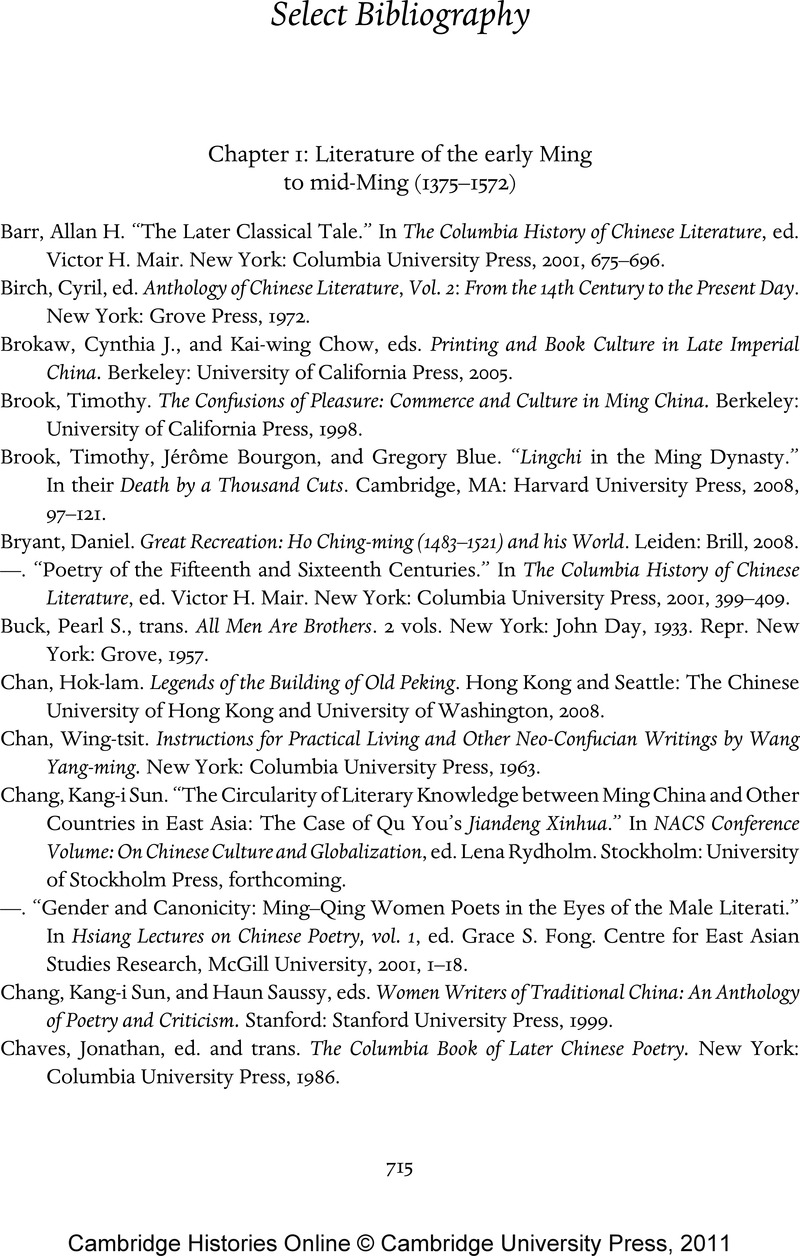Book contents
- Frontmatter
- Introduction to Volume II
- 1 Literature of the early Ming to mid-Ming (1375–1572)
- 2 The literary culture of the late Ming (1573–1644)
- 3 Early Qing to 1723
- 4 The literati era and its demise (1723–1840)
- 5 Prosimetric and verse narrative
- 6 Chinese literature from 1841 to 1937
- 7 Chinese literature from 1937 to the present
- Epilogue: Sinophone writings and the Chinese diaspora
- Select Bibliography
- Glossary
- Index
- References
Select Bibliography
Published online by Cambridge University Press: 28 May 2011
- Frontmatter
- Introduction to Volume II
- 1 Literature of the early Ming to mid-Ming (1375–1572)
- 2 The literary culture of the late Ming (1573–1644)
- 3 Early Qing to 1723
- 4 The literati era and its demise (1723–1840)
- 5 Prosimetric and verse narrative
- 6 Chinese literature from 1841 to 1937
- 7 Chinese literature from 1937 to the present
- Epilogue: Sinophone writings and the Chinese diaspora
- Select Bibliography
- Glossary
- Index
- References
Summary

- Type
- Chapter
- Information
- The Cambridge History of Chinese Literature , pp. 715 - 739Publisher: Cambridge University PressPrint publication year: 2010



